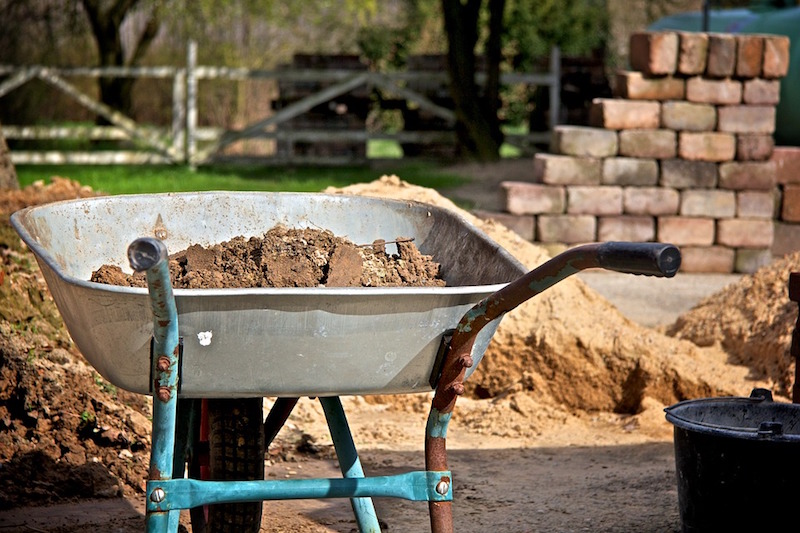Construction employment increased by 228,000 jobs over the past year despite a weather-related dip last month, and the industry's unemployment rate fell to 7.4%, the lowest yet for March, according to an analysis of new government data by the Associated General Contractors of America. Association officials called for revitalizing and adequately funding career and technical education and training programs to ensure that employment in the high-paying industry would continue to grow.
"Construction employment indicators are still signaling strong demand on an annual basis, even though unusually bad weather in several regions probably depressed hiring in March," said Ken Simonson, the association's chief economist. "Employment is rising twice as fast as for the overall economy, pay rates and growth are outpacing the private sector as a whole, and the industry's unemployment rate was the lowest ever for March."
Construction employment totaled 7,150,000 in March, a dip of 15,000 for the month but an increase of 228,000, or 3.3%, over 12 months. The economist pointed out that the year-over-year growth rate in industry jobs was more than double the 1.5% rise in total nonfarm payroll employment.
Hourly earnings in the industry averaged $29.43 in March, a rise of 2.9% from a year earlier. That put average pay in construction 9.7% higher than the average for all nonfarm private-sector jobs, which rose 2.7% in the past year, to $26.82, the economist noted.
The unemployment rate in construction dropped from 8.4% a year earlier to 7.4% last month—the lowest March rate since the series began in 2000. The number of unemployed job seekers with recent construction experience declined to 696,000 in March 2018, which was the lowest total for March since 2001, Simonson said.
Residential construction—comprising residential building and specialty trade contractors—shrank by 7,000 jobs in March but added 114,200 jobs, or 4.3%, over the past 12 months. Nonresidential construction (building, specialty trades, and heavy and civil engineering construction) employment also increased by 114,200, or 2.7%, over 12 months, despite a drop of 8,200 jobs in March.
Construction officials said the new employment figures show the industry continues to create high-paying, long-term jobs but that there is a critical need for more workers. They urged officials at all levels of government to re-invigorate and adequately fund career and technical education programs.
"Construction offers great careers, with above-average pay both for entry-level workers and for the industry as a whole compared to the private-sector average," said Stephen E. Sandherr, the association's chief executive officer. "To make sure students and workers displaced from other jobs have the chance to gain the skills needed to succeed in growing sectors like construction, government officials must do their part. That means funding up-to-date career and technical education and training, and allowing the industry to collaborate in providing opportunities."
Related Stories
High-rise Construction | Jan 23, 2017
Growth spurt: A record-breaking 128 buildings of 200 meters or taller were completed in 2016
This marks the third consecutive record-breaking year for building completions over 200 meters.
Market Data | Jan 18, 2017
Fraud and risk incidents on the rise for construction, engineering, and infrastructure businesses
Seven of the 10 executives in the sector surveyed in the report said their company fell victim to fraud in the past year.
Market Data | Jan 18, 2017
Architecture Billings Index ends year on positive note
Architecture firms close 2016 with the strongest performance of the year.
Market Data | Jan 12, 2017
73% of construction firms plan to expand their payrolls in 2017
However, many firms remain worried about the availability of qualified workers.
Market Data | Jan 9, 2017
Trump market impact prompts surge in optimism for U.S. engineering firm leaders
The boost in firm leader optimism extends across almost the entire engineering marketplace.
Market Data | Jan 5, 2017
Nonresidential spending thrives in strong November spending report
Many construction firms have reported that they remain busy but have become concerned that work could dry up in certain markets in 2017 or 2018, says Anirban Basu, ABC Chief Economist.
Market Data | Dec 21, 2016
Architecture Billings Index up slightly in November
New design contracts also return to positive levels, signifying future growth in construction activity.
Market Data | Dec 21, 2016
Will housing adjust to an aging population?
New Joint Center report projects 66% increase in senior heads of households by 2035.
Market Data | Dec 13, 2016
ABC predicts modest growth for 2017 nonresidential construction sector; warns of vulnerability for contractor
“The U.S. economy continues to expand amid a weak global economy and, despite risks to the construction industry, nonresidential spending should expand 3.5 percent in 2017,” says ABC Chief Economist Anirban Basu.
Market Data | Dec 2, 2016
Nonresidential construction spending gains momentum
Nonresidential spending is now 2.6 percent higher than at the same time one year ago.
















